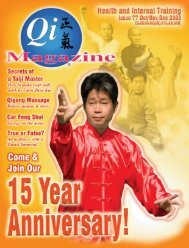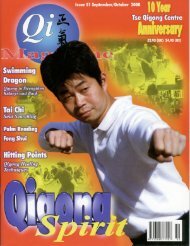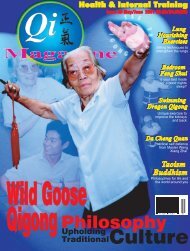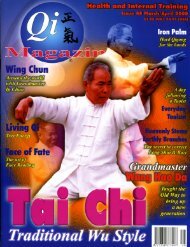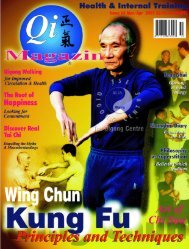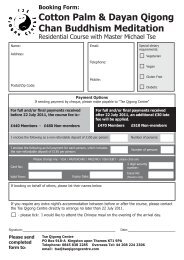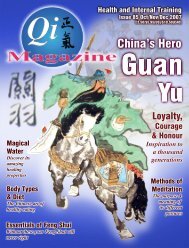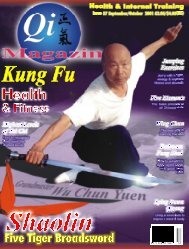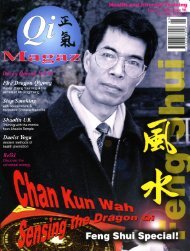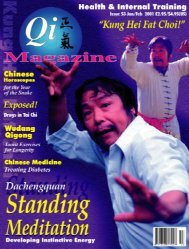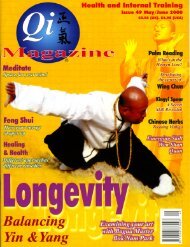You also want an ePaper? Increase the reach of your titles
YUMPU automatically turns print PDFs into web optimized ePapers that Google loves.
Moving Qi<br />
The Tui Na Way<br />
Tried and tested over 4000 years and still going strong, Tui Na is still little<br />
known in the West. But not for long! Tui Na is about to explode onto the<br />
centre stage of complementary medicine as the efforts of Maria Mercati and<br />
an ever-growing team of practitioners spread the message about this unique<br />
healing system. Maria, who is an established teacher of oriental therapies,<br />
learned her skills in China, Indonesia, and Thailand from acknowledged<br />
masters in their respective fields. Here, she introduces its basic principles<br />
and shows how relevant its healing powers are in today’s world.<br />
Tui Na is one of the main branches of TCM along with<br />
acupuncture, herbal medicine, and <strong>Qigong</strong>. The name<br />
Tui Na means “push” and “grasp” which well describes<br />
the fundamentals of this remarkable hands on medicine.<br />
It is a healing system in its own right with<br />
the most diverse range of techniques of<br />
any of the<br />
systems of<br />
massotherapy<br />
practised at<br />
the present<br />
time. Tui Na has<br />
been the inspiration<br />
for many of<br />
the methods used in various forms of oriental bodywork. Some<br />
1200 years ago Tui Na was introduced to the Japanese who<br />
radically modified it to suit their needs calling it “Shiatsu”. In<br />
recent times this was further modified to suit Western<br />
temperaments leaving it with little resemblance to its Tui Na<br />
progenitor.<br />
There are still many in the West who refuse to accept<br />
TCM as bona fide medicine. “It is not scientific” or “It cannot<br />
be verified by scientific methods” are two of the criticisms often<br />
heard. This type of thinking comes from those who know very<br />
little or nothing about it. TCM is rigidly based on a science -<br />
Chinese science - of great complexity that it is quite different<br />
from Western science. It regards life and all life functions as the<br />
result of an interaction between the fundamental energies<br />
of the universe collectively known as Qi,<br />
pronounced “chee”. The internal organs of the<br />
body are seen as functional units rather than<br />
anatomical structures. Each organ has its own<br />
characteristic Qi in respect of the precise balance<br />
between Yin and Yang functions. For a healthy,<br />
pain-free body the overall balance between the<br />
Qi energies of the internal organs must be correct<br />
and so must the Yin/Yang balance of the<br />
individual Qi energies. All the therapeutic<br />
methods of TCM aim at achieving and<br />
maintaining this balance. Tui Na, like acupuncture,<br />
is designed to maintain, and, when necessary,<br />
restore the normal flow of Qi within our bodies.<br />
It treats the whole being, not its component parts<br />
which are the focus of attention for Western<br />
medical practitioners. All branches of TCM are<br />
truly holistic in this respect.<br />
Qi Magazine 19



